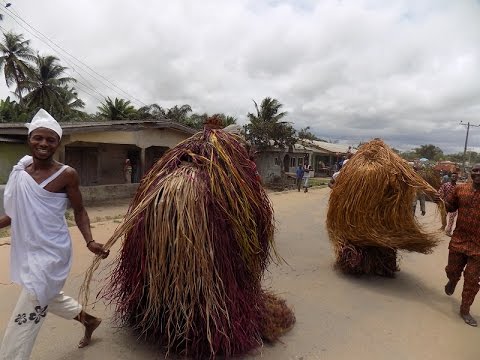Although mistakenly referred to as ‘Egun’, the real name for the tribe is ‘Ogu’. They are a descendants of people who migrated from Whildah, Allada, and Weme, which are all now part of the Republic of Benin. The Ogus used to be settlers at the former Dahomey, now known as Republic of Benin.
In Nigeria today, the Ogus are found mainly in towns and villages in Badagry, and Ogu indigenous communities like Makoko, and Iwaya in Lagos State, and Ago-Egun in Abeokuta, Ogun State. In addition, they are found in states that share borders with Benin Republic. This includes Oyo, Kwara, and Niger States.
The migration was mainly caused by the Dahomian war in the 18th century, which brought about the need for better farmlands and waters for fishing.
Below are facts you should know about the Ogu tribe.
The Ogus speak similar language to the natives of Benin Republic
The Ogus are distributed in places like Igbogbele, Kweme, Badagry, Ajara, Agbojetho, Rapoji, Aivoji, Iweseme town, Ajido town, and Ikoga town, all in Badagry Local Government Area, Lagos State; as well as Ipokia, Ado-Odo/Ota, Imeko and Yewa South Local Government Areas of Ogun State. Nevertheless, they are a sub-ethnic group of the larger Ogu speaking people of Benin Republic.
Ogu/Egun is a dialect of Gun-be and also has dialectal varieties such as Seto, Toli, Whla, Thevi, etc.
The Eguns (Ogus) may be descendants of Aegean
An interesting historical fact states that the Eguns may have their ancestry in the Aegean people of the Philistines. This particular history follows that the phonetic pronunciation of ‘Egun’ is similar to that of ‘Aegean’. Also, the title of the Egun king, ‘Akran’, is similar to that of the king of the Philistines, ‘Ekron’.
The Ogus constitute the minority in Nigeria
The Ogus make up only about 15% of the entire population of Lagos State. In Nigeria as a whole, their population is about 400,000. Although they are sometimes regarded as a sub-ethnic group of Yoruba, there is a debate on the validity of this claim. One major reason is that they do not speak similar language with the Yorubas, neither do they bear Yoruba names. Similarly, they experience marginalization in the political sphere.
Salt making was common among the Ogus
Salt production was a big opportunity for the Ogus who settled in Badagry. Bapo village in Igbogbele Beach was known as a salt factory for large production of salt. As a matter of fact, in the 18th century and during the World War II, Yorubas travelled from far and near to Bapo to purchase this essential commodity.
Apart from salt production, the Ogus are known for palm wine tapping, garri production, coconut processing, hunting, farming, and fishing.
‘Zangbeto’ is the police of the Ogu
Among the Ogu, there is a myth that ‘Zangbeto’, a deity or masquerade, is responsible for sustaining law and order in the society. It is the traditional town police among the Egun. Hence, this deity is highly respected and revered.

